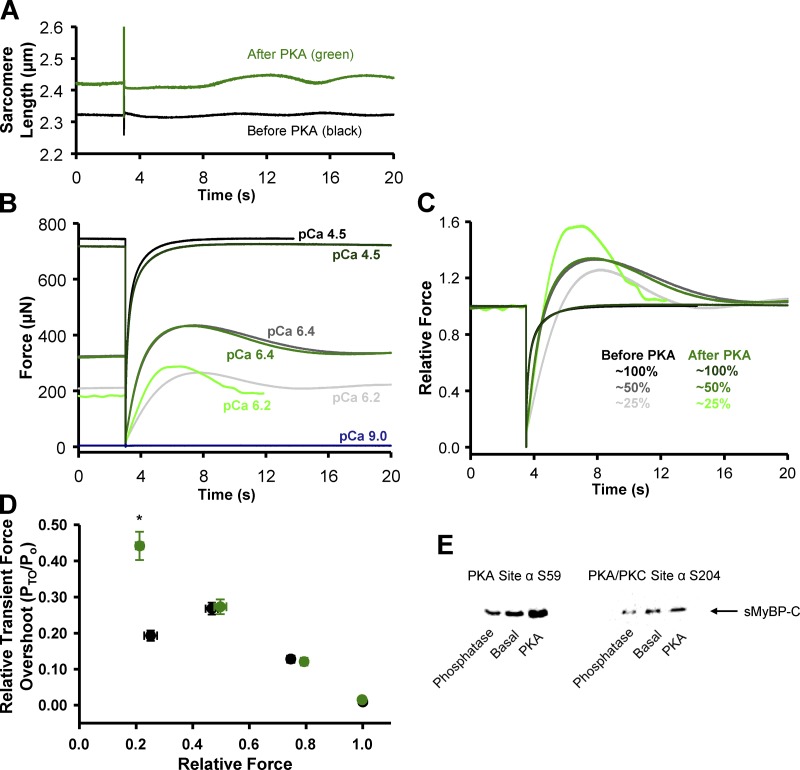Figure 4.
Transient force overshoot in slow-twitch skeletal muscle fibers before and after PKA treatment. (A) Representative sarcomere length trace during a slack–restretch maneuver in a permeabilized slow-twitch skeletal muscle fiber before (black) and after (green) PKA treatment. (B) Representative absolute force traces following a slack–restretch maneuver from a permeabilized slow-twitch skeletal muscle fiber before (black, charcoal, gray) and after (forest, green, lime) PKA at 25% (pCa 6.4), 50% (pCa 6.2), and maximal (pCa 4.5) relative force, respectively. (C) Representative relative force traces, which were normalized to the steady-state force before the mechanical perturbation. (D) Relative transient force overshoot (PTO/Po) in permeabilized slow-twitch skeletal muscle fiber preparations before (black) and after (green) PKA treatment as a function of Ca2+ activation levels (n = 4). PTO/Po was significantly increased only at low Ca2+ activation levels. *, P < 0.05 using paired t test analysis. (E) Amino acid residue-specific phosphorylation levels of sMyBP-C in a slow-twitch skeletal muscle fiber bundle under basal conditions and after either lambda phosphatase or PKA treatment. Following lambda phosphatase sMyBP-C Ser59 and Ser204 phosphorylation (relative to basal) was 0.70 ± 0.05 and 0.72 ± 0.05, respectively (n = 6). Following PKA, sMyBP-C Ser59 and Ser204 phosphorylation (relative to basal) was 1.58 ± 0.17 and 1.27 ± 0.03, respectively (n = 6–8).

